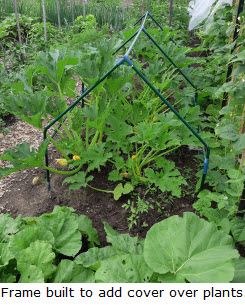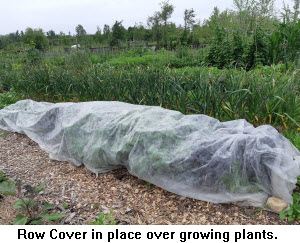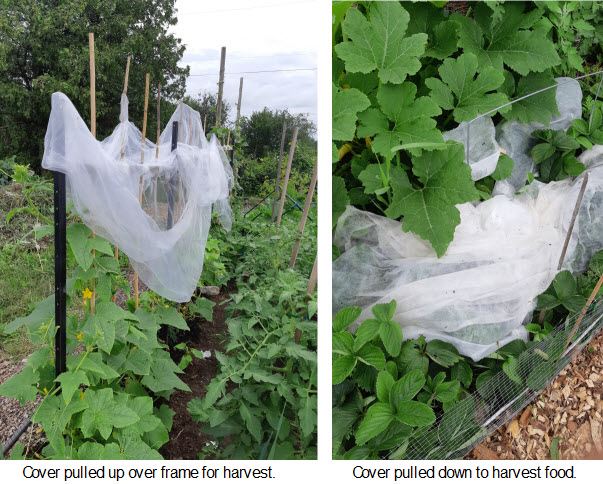Many people believe that organic gardening is simply growing food and flower gardens without taking measures to promote the growth of your plants or prevent pests and diseases. Organic gardeners will definitely beg to differ with this view!
Gardening in a way that nourishes the soil without synthetic fertilizers while rejecting the use of toxic chemicals to control pests and diseases of crops is possible. This can be cost-effective while protecting the environment, improving soil fertility and plant health. Impressive yields are achieved of chemical-free food by nourishing your soil while avoiding nourishing the wide range of critters that will be eager to enjoy the fruits of your labour!
Crop row covers are an excellent method of protecting against both flying and crawling insect pests. If carefully installed, they are efficient at thwarting rabbits and other rodents too. They are also an effective deterrent to slugs and snails.
Row cover fabric can be purchased at hardware and gardening stores or ordered online. It is a lightweight, white synthetic material, although heavier fabrics are sometimes used where protection against cold temperatures, wind, harsh sunlight is desired. In all cases, the fabric allows light, air and water to enter.


A floating row cover, which is extremely lightweight (fragile) can be placed directly over a plant without the need for further support. It then should be weighted down with soil, stones or wood. A supporting framework is needed for other plants. This makes it easier to recycle the row covers in subsequent years as the more robust fabric is less likely to become ripped with use.
More delicate plants, benefit from a framework of support. This could be a framework already being used like tomato cages, stakes or trellises. Again, to exclude pests, this needs to be buried at or below ground level. Hoops are generally used commercially; you can purchase these or make your own from materials you have on hand. Hoops must be higher than the mature crop or the fabric must be removed once the plants are bigger and more resistant to pests.

The row covers are generally able to be removed before harvest, but where pests continue to be problematic, they can remain in place throughout the season. With careful use and storage, row covers and supporting materials can be reused many times as a further benefit to the environment!
Article and photos submitted by Dinah Gibbs, a member of the Richmond Hill Garden & Horticultural Society



